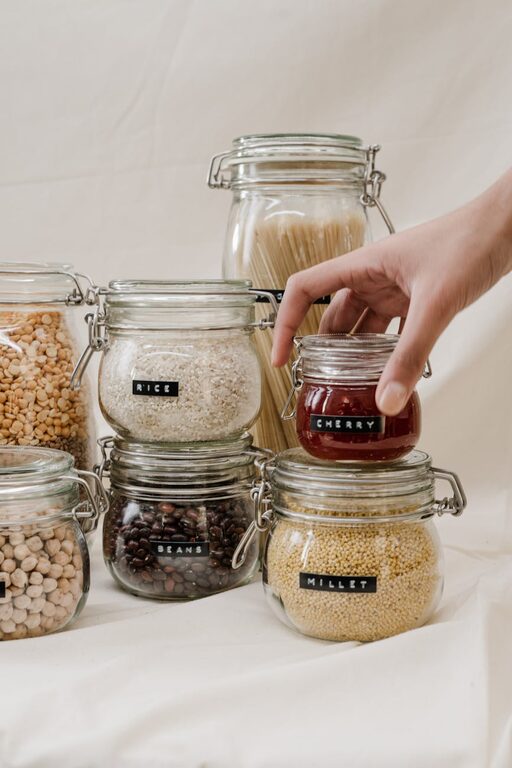Planning meals around pantry staples is a smart way to simplify cooking, save money, and reduce food waste. Whether you’re short on time, ingredients, or inspiration, your pantry can be a treasure trove of potential meals waiting to happen. In this post, we’ll explore step-by-step how to plan delicious meals using what you already have on hand.
Why Plan Meals from Pantry Staples?
Pantry staples are non-perishable or long-lasting food items such as canned goods, dried grains, spices, and preserved foods. When you base your meal planning on these items, you:
– Save trips to the grocery store
– Stretch your food budget
– Reduce chances of throwing away unused food
– Get creative with meals
Having a well-stocked pantry also acts as a safety net when fresh ingredients are low.
Step 1: Take Inventory of Your Pantry
Before planning, know exactly what you have. Spend some time sorting your pantry and creating a list of staples such as:
– Grains (rice, pasta, quinoa, oats)
– Canned beans and legumes
– Canned vegetables and fruits
– Canned fish or meats (tuna, chicken)
– Stocks and broths
– Baking essentials (flour, sugar, baking powder)
– Cooking oils and vinegars
– Spices and dried herbs
– Nut butters and sauces
Write down quantities when possible. This will help you avoid buying duplicates and also suggest meal ideas based on what’s available.
Step 2: Identify Meal Categories to Focus On
Pantry staples lend themselves well to several types of meals. Consider planning around:
– One-pot meals: soups, stews, chilis, and casseroles
– Pasta dishes: quick sauces using canned tomatoes or beans
– Rice or grain bowls: topped with canned veggies, nuts, and sauces
– Sandwiches and wraps: using canned tuna, spreads, and condiments
– Breakfasts: oatmeal, pancakes, or muffins using dry goods
Identifying these categories can help you organize your recipes and reduce decision fatigue.
Step 3: Find Recipes Matching Your Ingredients
Look for simple recipes that use most of the ingredients you already have to minimize shopping. Here’s how to get started:
– Use online tools or apps where you input your ingredients to find recipes. Websites like AllRecipes or SuperCook are useful.
– Look at the labels — sometimes canned items suggest simple recipes on the back.
– Search for “pantry meal recipes” or “meals from canned goods” for inspiration.
– Consider recipe books or blogs focused on budget or pantry cooking.
Make a list of your favorite or easiest recipes to use repeatedly.
Step 4: Plan Your Weekly Meals
Once you have your favorites picked out, create a weekly or bi-weekly meal plan. Tips for this stage:
– Mix and match: rotate through different meal categories to keep the week interesting.
– Incorporate fresh produce when available to add nutrition and flavor.
– Plan meals that use similar ingredients consecutively to reduce waste.
– Allocate days for using leftovers to avoid excess food.
Use a simple planner app, a printed template, or your calendar to schedule meals.
Step 5: Shop Smart for Needed Ingredients
With your pantry as the foundation, your shopping list will be shorter and more focused. When buying fresh items to complement pantry meals:
– Purchase only what you need for the week.
– Opt for seasonal produce for freshness and cost-effectiveness.
– Choose versatile ingredients like onions, garlic, and carrots — they go well with many dishes.
– Avoid impulse buys by sticking to your list.
Step 6: Prepare and Store Pantry-Based Meals Efficiently
Cooking with pantry staples is convenience-friendly but still benefits from some planning:
– Batch cook soups, stews, or grains for easy reheating.
– Use airtight containers to store leftovers properly.
– Label and date homemade sauces or mixes.
– Freeze portions for long-term storage.
These habits save time and reduce waste.
Additional Tips for Pantry Meal Success
– Rotate staples: Use older items first to keep your pantry fresh.
– Experiment with spices: Different flavor combinations can transform simple ingredients.
– Keep basics stocked: Regularly replenish essentials like rice, canned tomatoes, and beans.
– Use pantry staples to complement fresh meals: The pantry can fill in gaps or add variety quickly.
– Be flexible: If you’re missing one ingredient, swap it for a similar pantry item.
Sample Pantry Meal Ideas to Get You Started
Here are a few easy dishes you can make largely from pantry staples:
- **Chickpea Curry:** canned chickpeas, canned tomatoes, coconut milk (optional), curry powder, rice
- **Tuna Pasta Salad:** canned tuna, pasta, olive oil, vinegar, dried herbs, canned corn or peas
- **Vegetable Soup:** canned mixed vegetables, broth, canned beans, dried herbs, rice or pasta
- **Lentil Stew:** dried or canned lentils, canned tomatoes, garlic, onions, spices
- **Oatmeal Pancakes:** rolled oats, flour, baking powder, milk or milk alternative, eggs
Wrapping Up
By using your pantry as your meal-planning base, you can reduce stress around cooking, lower your grocery bills, and enjoy a wide variety of delicious, homemade meals. Start by knowing what you have, choosing versatile recipes, and planning meals that fit your lifestyle. With these simple steps, pantry staples will be your new cooking allies.
Happy cooking!

